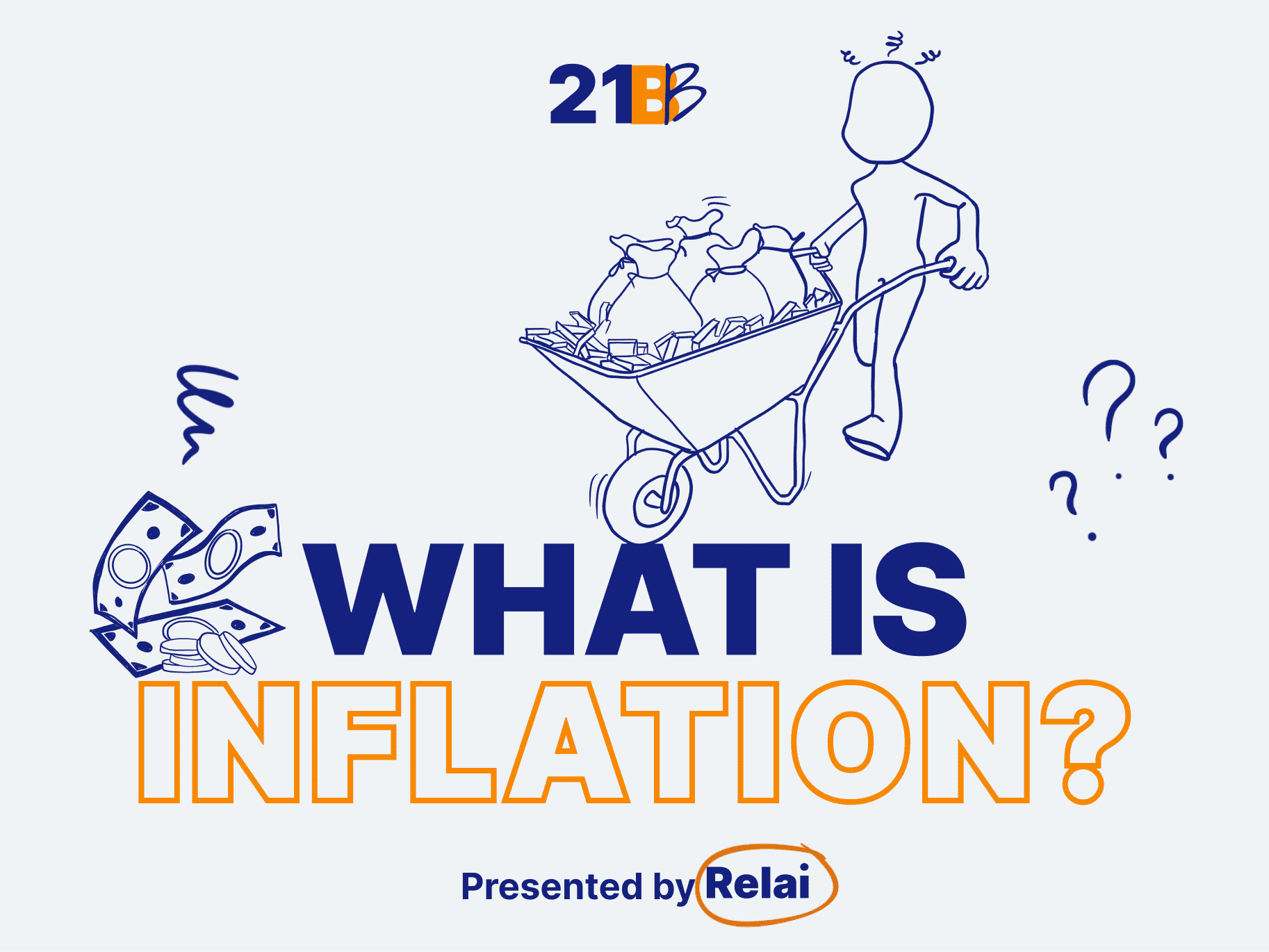Inflation is described as the gradual increase in prices and decline in purchasing power of money over time. While the short-term effects of inflation may appear negligible, over a long period, inflation reduces how much your money is worth.
Read on to learn about inflation and how you can protect the value of your savings.
Inflation Explained
Inflation refers to the decrease in purchasing power when prices of goods and services increase.
The inflation rate is the rate at which the value of money declines as prices for things such as food, clothing, consumer staples, transport, and utilities increase.
For example, a cup of coffee in the US cost around $0.75 in 1990. In 2010, a tall cup of Starbucks coffee cost around $4. This means if you saved a $10 bill from 1990, you would buy fewer cups of coffee two decades later.
However, you should not think of inflation as simply higher prices for a single item or service. Inflation is the holistic rise in prices across a sector of industry, such as the manufacturing or food industry, and ultimately a nation’s entire economy.
On a macro-level, high inflation and high cost of living are the most common causes of the deceleration of economic growth. Economists argue that prolonged inflation happens when a country’s monetary supply far outpaces the economic output.
To neutralize this, central banks have long put measures in place to manage the supply of currency and regulate financial markets to bring inflation under control.
However, as we have witnessed in the past years, excess money printing leads to an increase in inflation. That’s exactly what we are experiencing now.
How Inflation Is Measured
Inflation is primarily measured by three main indices, the consumer price index (CPI), the wholesale price index (WPI), and the producer price index (PPI).
While the names of inflation indexes vary from country to country, the methodology used to calculate inflation is more or less the same everywhere.
| Index | Details |
| Consumer Price Index (CPI) | CPI is the most commonly used index used to assess price changes associated with the cost of living. It measures the average weighted price of consumer goods and services such as food, medicine, transport, etc. CPI is calculated by taking the price of each item in the selected basket of goods and averaging them based on their corresponding weight in the entire basket. The prices being taken are the retail prices being offered to consumers. |
| Wholesale Price Index (WPI) | WPI measures and tracks the changes in wholesale product prices. While these may differ from one country to another, they most include commodities at the producer or pre-retail level. |
| Producer Price Index (PPI) | PPI is a collection of indexes that measure the average change in selling prices from the perspective of domestic producers of intermediate products over time. |
Since no one index can capture the full range of price changes in an economy, multiple price indexes are used to get an accurate picture of the inflation rate.
That being said, the basic formula to calculate the inflation rate is:
Inflation rate = (Final CPI Index Value/Initial CPI Value) x 100
How Inflation Erodes the Value of the Money in Your Bank Account
Inflation doesn’t just affect your expenses. It also impacts your savings.
The value of your savings declines as the purchasing power of money falls.
For example, if you save money in your bank account that pays you 1% interest, but the inflation rate is 5%, the money in your account loses 4% in value. So the item(s) you planned to purchase will have most likely become more expensive.
If you are a retiree on a fixed pension, for example, a high inflation rate will erode your pension’s purchasing power, negatively affecting your standard of living.
Curious about how inflation affects your purchasing power over a couple of years? The Compound Inflation Calculator by our friends at ‘Bitcoin Rocks!’ is a handy tool that allows you to easily calculate the amount your salary needs to increase to maintain your purchasing power over time.
Why Is Bitcoin Considered a Hedge Against Inflation?
Bitcoin is considered a hedge against inflation due to its disinflationary characteristics. Out of bitcoin’s total supply of 21 million coins, around 19 million have already been mined. The remaining coins are entering circulation at an increasingly slower rate.
Existing holders are incentivized to hold onto their bitcoin as increasing demand is met with a limited supply, resulting in a disinflationary scenario.
Now compare this to fiat money, where governments can increase the money circulation by printing more money, which leads to a decrease in purchasing power and an increase in inflation.
Takeaways:
- Inflation refers to the decrease in purchasing power when prices of goods and services increase.
- Inflation doesn’t just affect your expenses. It also impacts your savings. The value of your savings declines as the purchasing power of money falls.
- Existing holders are incentivized to hold onto their bitcoin as increasing demand is met with a limited supply, resulting in a disinflationary scenario.
Disclaimer: Relai services are exclusively recommended for Swiss and Italian residents. None of this content constitutes investment advice. Always conduct your own research before investing in any digital asset.





